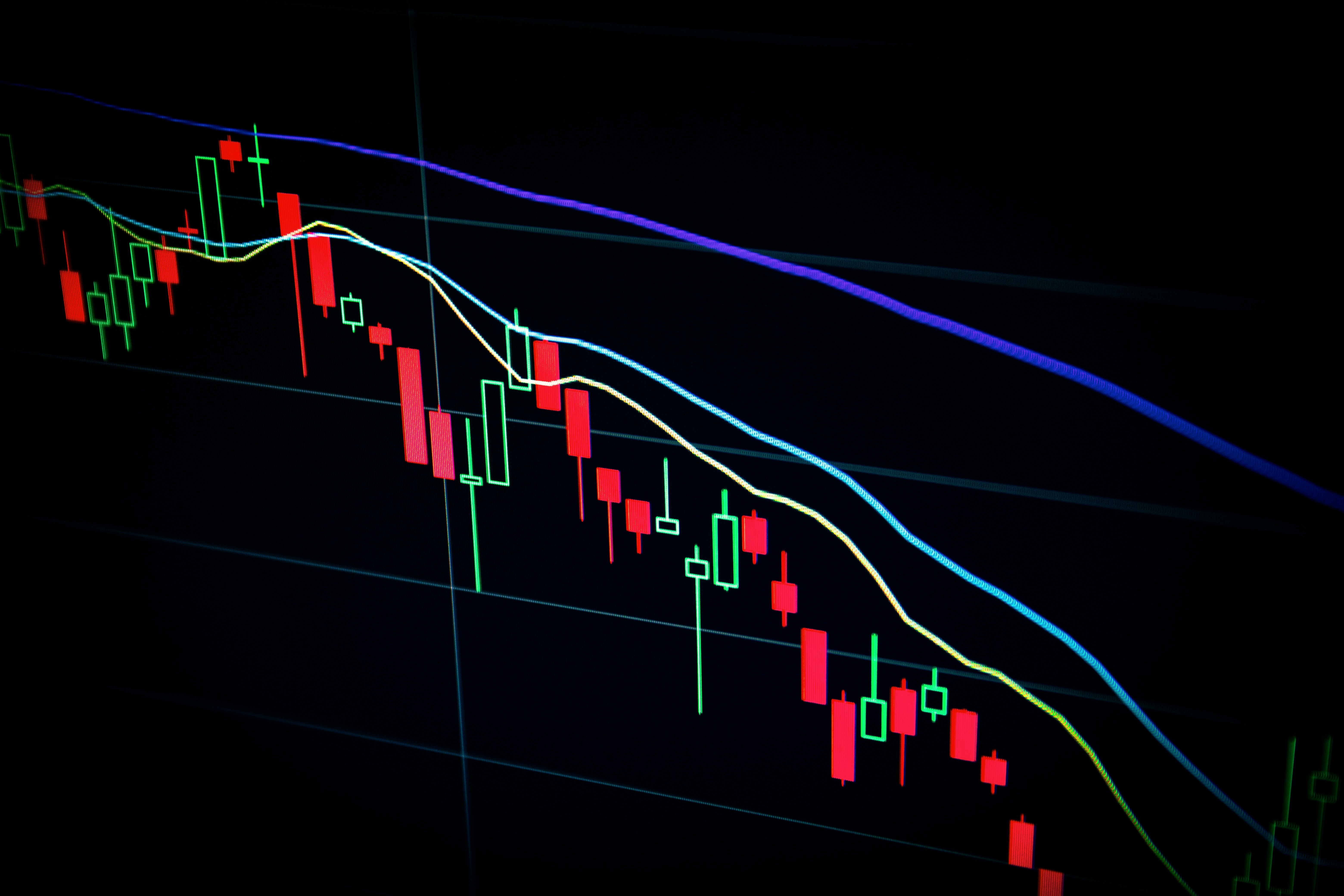A lot has been written about the costs and benefits of investing in private assets, including the risk associated with being locked into long-term closed-end funds, which is referred to as “illiquidity risk.” This risk, and other costs, such as staff costs to access, underwrite, and monitor investments, are thought to be offset by the benefits of investing in private assets, including greater diversification and higher expected returns (often referred to as the “illiquidity premium”). In my experience, having previously worked for a large, global insurance company that had substantial premium inflows and long-dated liabilities, institutional investors typically view illiquidity as an acceptable risk that can be effectively managed. For the average investor, though, how significant is illiquidity risk?
This is an important question for all investors, but particularly for accredited investors and retail investors new to private asset investing. Referring to existing academic research and using a simple model and assumptions about investor behavior, I have tried to assess the costs and benefits of illiquidity and determined that illiquidity may be economically beneficial to many individual investors. Further, as the democratization of private assets leads to greater access to semi-liquid vehicles (such as interval funds), investors need to be wary of excessive trading and mistiming the market, which has been shown to be costly for investors in public markets.
Private Fund Structures
Although many high-net-worth and retail investors directly own significant private assets, such as homes, businesses, commercial real estate, employee stock, and angel investments, this article will focus on the broader investment landscape of commingled vehicles now being made more available to those investors. Commingled funds are structured to allow for many investors to pool their capital to buy assets that a single investor could not, or would prefer not to own individually, and are usually managed by professional investment managers, or general partners.
In private markets, there are broadly two types of commingled funds: 1) closed-end funds, which take in investor capital upfront, invest over a period of time, and distribute proceeds back to investors within a defined period of time, and 2) semi-liquid funds, which take in investor capital over a longer period of time, or continually, invest over time, retain the proceeds from assets sold, and do not distribute proceeds back to investors within a defined period of time. These two structures are described further below, particularly as they relate to liquidity for investors.
Closed-End Funds
The typical structure of a closed-end fund includes an upfront commitment by investors, periodic and unscheduled capital calls often for the first five years of the fund, and periodic and unscheduled distributions often for the next five-plus years of the fund. Capital calls are made for portfolio investments, general partner management fees, and fund expenses, and distributions are made for dividends, return of capital, and gains, net of carried interest paid to the general partner.
Closed-end funds generally do not have any liquidity provisions for investors, and not funding a capital call when issued can come with a severe penalty (for example, some funds can purchase an investor’s position at a 50% discount). There is a robust secondary market for institutional investors, but not yet for individual investors. Even for institutional investors, there can be significant costs associated with the disposal of fund interests, which vary based on market conditions.
Semi-Liquid Funds
Recently, semi-liquid vehicles such as tender offer funds, interval funds, non-traded REITs, and BDCs have grown significantly. They have also expanded into segments of private markets not previously covered, including private equity and infrastructure. While not limited to individual investors, these products are attractive to them due to low minimum investment amounts, no ongoing requirements to fund capital calls, and some provisions to offer liquidity.
For many products, liquidity is offered on a monthly or quarterly basis, but is also typically limited to a low percentage of total assets of the fund such as 5% per quarter. So, if an investor seeks to redeem their interest at a time when others are not seeking redemption, they may be able to get all of their capital back when requested. But if the investor is trying to exit when everyone else in the fund is trying to exit, they may be “gated” and need to wait for multiple quarters to get fully redeemed. This recently occurred in the real estate sector as redemption requests for a number of large non-traded REITs far exceeded the periodic liquidity percentage, and investors were not able to redeem their full capital.
Estimating the Cost of Illiquidity in Closed-End Funds
Since investors usually think about investment performance in terms of yields or rates of return, I was interested to explore if there was any academic or publicly available industry research that expressed the cost of illiquidity risk of private funds in those terms.
The most relevant publications that I found were: Sorensen et al. (2014) who arrived at a cost of approximately 105 basis points for moderately risk-adverse investors, Jansen and Werker (2022) who calculated the illiquidity cost of private equity to be 4 – 55 basis points in their baseline scenarios, and Bollen and Sensoy (2021) who, while they did not directly express the cost of illiquidity in basis points, developed a model for assessing private equity returns and optimal allocations under different scenarios of investor risk tolerance, liquidity shocks, and accessing secondary markets.
I thought that the Bollen and Sensoy approach reflected how institutions grapple with illiquidity in their portfolios, and I tried to adapt it to a simple Excel model to specifically calculate the cost of illiquidity. The results that I came up with are that the cost of illiquidity is 0 – 85 basis points for investors who have allocated 25% or less of their portfolio to private assets. My assumptions were based on the following:
- Bollen and Sensoy show that expected breakeven returns for investors increase based on the risk-adversity of the investor, the timing and variability of capital calls and distributions, and the percentage of total assets an investor has allocated to private equity. For almost the entire range of risk adversity, Bollen and Sensoy show that the optimal allocation to private equity is about 25% or less, so I focused on those investors.
- I assumed that investors are forced to sell a portion of their aggregate portfolio (liquid, public, and private assets) when there are systematic shocks (e.g., financial crisis) or when there are idiosyncratic shocks (e.g., job loss) that impact an individual’s wealth and liquidity. I assumed a 1% per quarter occurrence of both risks, but only one shock happening during the life of the fund.
- I assumed that investors are forced to sell up to one-quarter of their holdings at a 50% discount in the event of a market meltdown or up to one-quarter of their holdings at a 25% discount in the event of a shock that is specific to the individual.
- The percentage of assets an investor is forced to sell in my model ranges from 0% if they have a de minimis amount of private assets in their aggregate portfolio to 25% if they have leveraged their public portfolio and face a margin call after a substantial decline in asset values. They then sell assets on a pro rata basis to maintain the same percentage of private assets in their portfolio.
- I arrived at the discounts stated above based on data cited by Nadauld et al. (2019), which showed that average discounts in secondary private markets transactions average about 14% for the period 2006 – 2014, including average discounts of 46% in 2009 – at the height of the great financial crisis. Since the secondary market was primarily an institutional market during that period, and still is today, I increased the average discount during normal markets to 25% to reflect greater transaction costs for individual investors. I did not materially increase the discount for the market meltdown (50%) compared to the GFC (46%) because there may be a natural ceiling if investors choose not to fund a capital call and effectively force being repurchased.
While I calculated the cost of illiquidity for private equity to be 0 – 85 basis points for investors who have allocated 25% or less of their total portfolio in private assets, to be clear, an investor who has much more of their portfolio in private assets would have much higher illiquidity costs in my model (upwards of 170 – 255 basis points). Also, it is reasonable to assume that different types of private assets will have different illiquidity costs. For example, private credit likely has a lower cost due to a shorter fund life and more periodic cash flows, and venture capital likely has a higher cost due to a longer fund life and greater volatility.
The Cost of Illiquidity Closed-End Funds May Be the “Smaller Half” of the Story

Although there can be a significant cost associated with illiquidity of private funds, one benefit that is not often acknowledged is that illiquidity may also protect investors from our all-too-common behavior of buying and selling securities or mutual funds at the wrong time.
In their annual report on investor returns in mutual funds and exchange-traded funds, Morningstar quantified this annual cost at 167 basis points over the 10-year period ended December 31, 2022. They noted that this cost has been consistent over the previous four times that they ran the analysis, with a range of 150 – 170 basis points. Morningstar’s analysis captures cash flows that may not be typically thought of as “trading” decisions, such as regular contributions to savings plans or regular withdrawals in retirement, but the magnitude and consistency of the reported cost suggest that mistimed investment decisions likely exceed 100 basis points.
Financial research, such as Barber and Odean (2013), has cited some of the well-known explanations for these results, including overconfidence (trading too much) and the behavior of selling winners and not losers (known as the “disposition effect”). Hartzmark (2015) introduced the concept of the “rank effect,” where “individuals are more likely to sell the extreme winning and extreme losing positions in their portfolio.” Interestingly, these behaviors have also been shown not to be limited to just individual investors. Quantifying the impact of behaviors, Akepanidtaworn et al. (2019) showed that institutional investors outperformed benchmark indices by about 120 basis points over a one-year period when they purchased stocks, but underperformed benchmark indices by about 80 basis points when they sold stocks. They hypothesized that institutional investors exhibit different behaviors when buying and selling that lead to divergent results.
So, while we like to think that we do not behave like the average investor, and some do not, as private assets are owned more broadly, the forced lock-up may benefit investors by eliminating (or significantly reducing) the inefficiencies of mistimed trades and effectively offset the costs of illiquidity. In imprecise economic terms, illiquidity of closed-end funds may yield benefits of 150 – 170 basis points per year compared to a cost of 0 – 85 basis points.
Estimating the Cost of Illiquidity in Semi-Liquid Funds

With the certainty of timing of capital investments (unlike closed-end funds, which typically have multi-year, and highly variable, capital call periods) and liquidity features that, in many circumstances, allow investors to exit their investments when they choose to do so, semi-liquid vehicles are more liquid than closed-end funds. While I have not tried to precisely quantify the illiquidity costs of these vehicles, it is reasonable to assume that the idiosyncratic costs are eliminated as investors will not be “gated” if an adverse event has only affected them or a small portion of all investors.
In my model for closed-end funds above, the idiosyncratic costs constitute about one-third of the total illiquidity costs. Removing them would lower the cost of illiquidity to a range of approximately 0 – 55 basis points for investors who have allocated 25% or less of their total portfolios in private assets. This result is logical as investors benefit from lower illiquidity costs but forgo some return since the vehicles need to hold a percentage of public securities and/or cash equivalents, which may have lower returns than the private assets they predominantly invest in.
Will Individual Investor Trading Behaviors Transfer to Semi-Liquid Funds?
A downside of investing in semi-liquid vehicles compared to closed-end funds is that they open investors to the potential of some of the same market timing behaviors that they exhibit for public securities. However, there may be better behavior with semi-liquid vehicles because investors may think about them differently if they classify them as illiquid. Also, greater transaction costs may make it less desirable to trade in and out of funds, but research still needs to be done as these vehicles mature.
Managing Illiquidity Risk and Avoiding Excessive Trading Are Important When Investing in Private Assets
Private assets have performed better than public assets over the long term, and the differential is often referred to as the illiquidity premium. In reality, this premium also covers the limited partners’ costs to access, select, and manage investments, capital charges for some investors such as banks and insurance companies, and possibly excess returns (“alpha”), in addition to illiquidity.
As the democratization of private markets draws more capital from high-net-worth and retail investors, a lot of attention is focused on illiquidity as the principal risk of private assets. In a back-of-the-envelope analysis, this risk does not appear to be too significant and, for closed-end funds, is likely entirely offset by inherent protections against the typical investor behavior of mistiming the market. This protection may be there, but to a lesser degree, for semi-liquid vehicles as well.
Importantly, despite the offsetting benefits of this protection, illiquidity risk needs to be managed by individual investors because the risk of systematic and idiosyncratic events occurring is all too real. In the last 15 years, we have experienced the great financial recession of 2008 – 2009 and the housing crisis, which extended much longer, plummeting energy prices in 2014 – 2016, COVID and high unemployment in 2020, and high inflation and increased interest rates more recently, which led to substantial asset value declines in real estate.
Investors can protect themselves by not over-allocating to private assets, inclusive of all private assets owned (such as private residences, businesses, commercial real estate, employee stock, and angel investments). As discussed in this article, the cost of illiquidity increases significantly as investors hold a greater percentage of private assets.
As an investor increases their allocation to private assets, the mix of private funds that an investor holds is also important:
- Investors should avoid over-allocating to typically more volatile sub-classes such as venture capital or sectors such as energy, because if a systemic shock occurs, it is more likely that those assets will have depressed prices and require greater discounts to sell.
- One of the investment behaviors that Barber and Odean cover in their paper is “familiarity bias,” which is when investors buy what they know (companies in their local geography or companies in their line of work). Investors also need to be mindful of familiarity bias so that they are not overallocated to investment funds that are highly correlated with their employment or home value. If an idiosyncratic shock occurs (e.g., loss of job), it is more likely that those assets will have depressed prices and require greater discounts to sell.
Lastly, even though semi-liquid funds create the opportunity to trade in and out of private assets, their greatest value is in providing access to those assets. Investors should think about those funds as illiquid and avoid the all too common trading behavior that incurs high transaction costs and mistimed investment decisions.
Steve was formerly the Chief Investment Officer and Head of Private Markets at Manulife Investment Management. In this role, he was responsible for leading global investment teams across a wide range of asset classes, including private equity and credit, real estate, infrastructure, timber, and agriculture. Steve has served as a director of many public and private companies during his career, including two of Manulife’s U.S. SEC-registered investment advisors.
Important Notice: Private Markets Navigator does not provide investment advice, and the information should not be construed as such. Investing in private asset funds is risky, with potential for total loss and long-term liquidity restrictions. Read our full dislaimer.






